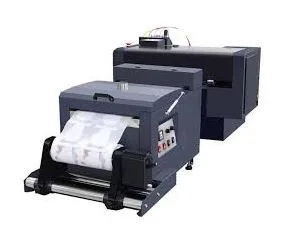Technological Advancements and Future Trends in Jetson Orin Nano AI Developer Kits and DTF Printers
Industrial transformation through automation, digital printing and through artificial intelligence is taking place at a rate never seen before. Among the most influential innovations, Jetson Orin Nano AI developer kits and DTF printers are redefining how industries approach intelligent computing and high-quality printing solutions.
These technologies are allowing manufacturers, designers and developers to build advanced applications that were previously constrained by computation power and production.
This article explores technological advancements, emerging applications, and future trends shaping the evolution of AI-driven developer platforms and direct-to-film (DTF) printing systems.
Advancements in Jetson Orin Nano AI Developer Kits and Their Role in Future AI Applications:
The Jetson Orin Nano AI developer kits represent a significant leap in embedded AI computing. These kits are designed by NVIDIA themselves and provide a high-performance parallel processing that is perfect for robotics, computer vision, autonomous systems and machine learning. With up to 40 trillion operations per second (TOPS) of AI performance they deliver the computational power required for real-time inference at the edge.
The architecture combines an energy-efficient GPU, high speed LPDDR5 memory and advanced multi-core ARM processors for seamless processing of complex neural network models. Developers have access to NVIDIA JetPack SDK, a single software framework integrating CUDA, cuDNN, TensorRT libraries. This ecosystem eases model deployment and optimizes as much as possible for edge AI workloads.
As the trend of AI in a decentralized manner grows, Jetson Orin Nano kits are likely to become the core of edge computing applications. Their high efficiency and low current consumption make them ideal for autonomous drones, industrial robotics, AI-based medical imaging and next-generation IoT ecosystems.
Moreover, with advancements in deep learning paradigms, these toolkits will support more complex models. This empowers developers to combine advanced natural language processing, generative AI, and predictive analytics into real-world solutions.
Revolutionizing Printing Technologies Through DTF Printers:
In parallel with AI innovations, DTF printers are transforming the printing and textile industries. DTF (direct to film): A highly advanced technology that enables the printing of designs on special films before direct application to fabrics under pressure and heat. Unlike traditional printing techniques, DTF printing provides high resolution images, high quality color reproduction and long term durability on different types of fabric.
Modern DTF printers utilize precision inkjet technology, advanced pigment inks, and integrated powder curing systems to streamline production. These developments minimize ink waste, cut operating costs and increase overall output quality. The technology can scale from small businesses to large-scale textile manufacturers and custom clothing manufacturers.
As trends in DTF technology evolve, AI-powered image enhancement algorithms will likely be integrated to improve design accuracy and color matching. Inefficiencies in material usage and downtime can also be reduced by implementing intelligent workflows, automation systems and predictive maintenance functionality.
Additionally, the advancement of eco-friendly inks and energy-efficient curing systems is in line with the industry’s demands for sustainable and cost-effective production processes.
Integration of Jetson Orin Nano AI Developer Kits with DTF Printing Systems:
The intersection between advanced printing technologies and the strength of AI computing opens up world-changing potential for manufacturing and customization industries. Integrating Jetson Orin Nano AI developer kits with DTF printer systems enables real-time image processing, automated color correction, and adaptive print optimization.
Through the integration of AI-powered algorithms, Jetson Orin Nano kits can analyze design files, detect inconsistencies, and fine-tune print parameters for optimal output quality. For instance, smart color matching can ensure that prints look consistent across various fabrics and textures. Additionally, predictive machine learning models can be used to predict hardware problems and automatically schedule maintenance, minimizing downtime and improving operational reliability.
Jetson-powered AI workflows can be used with DTF printing for mass customization at scale in e-commerce and on-demand manufacturing applications. Companies can use artificial intelligence (AI) models to analyze consumer preferences, create personalized product designs on the fly and place them as orders to production lines for quick delivery. This trend is redefining the speed, flexibility, and profitability of the apparel and merchandise business.
Future Trends Shaping AI Computing and DTF Printing Technologies:
The future of Jetson Orin Nano AI developer kits lies in expanding edge intelligence capabilities. As AI models get more complicated, developers will need more powerful hardware acceleration and built-in machine learning pipelines to ensure low latency performance. Subsequent versions are scheduled to include better thermal performance, higher data throughput and support for larger deep learning models.
Generative AI integration is also a new trend that allows for real-time content generation and intelligent image processing directly on Jetson devices. Your technological developments will create new possibilities in terms of autonomous systems, augmented reality, or generation of individual media content.
For DTF printers, future developments will focus on automation, versatility, and sustainability. Fully autonomous print calibration, AI assisted material identification and robot-based transfer units will reduce the amount of manual labor required while increasing production speeds. Substantial growth in the global printing equipment market can be attributed to water-based inks and eco-friendly drying technologies, which are anticipated to address increasing environmental regulations and market demand due to the contamination and pollution issues associated with conventional inks.
Additionally, hybrid printing solutions incorporating DTF technology with artificial intelligence (AI)-driven predictive analytics will change the game for quality control processes. Integrated sensors and AI algorithms will keep an eye on print accuracy in real time, guaranteeing defect-free production and greater production reliability.
Conclusion:
The intersection of Jetson Orin Nano AI developer kits and DTF printers reflects a broader shift toward intelligent, data-driven manufacturing ecosystems. These technologies are redefining possibilities across industries by making automation, personalization, and operational efficiency possible on scales never seen before.
As the DTF printing industry continues to embrace the transformative power of AI computing, we can anticipate more advanced systems, superior print quality, and a competitive edge for businesses adopting this technology.





